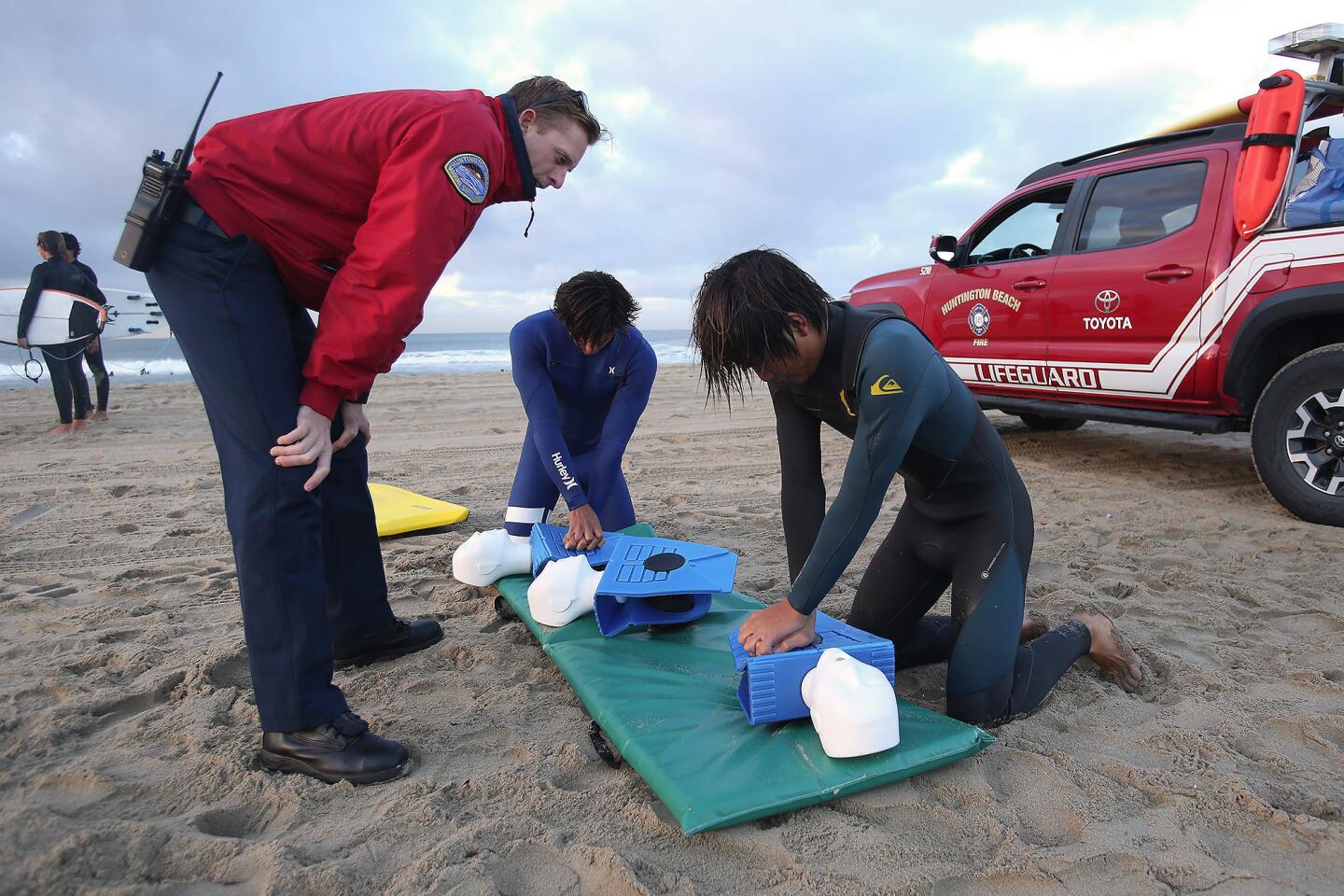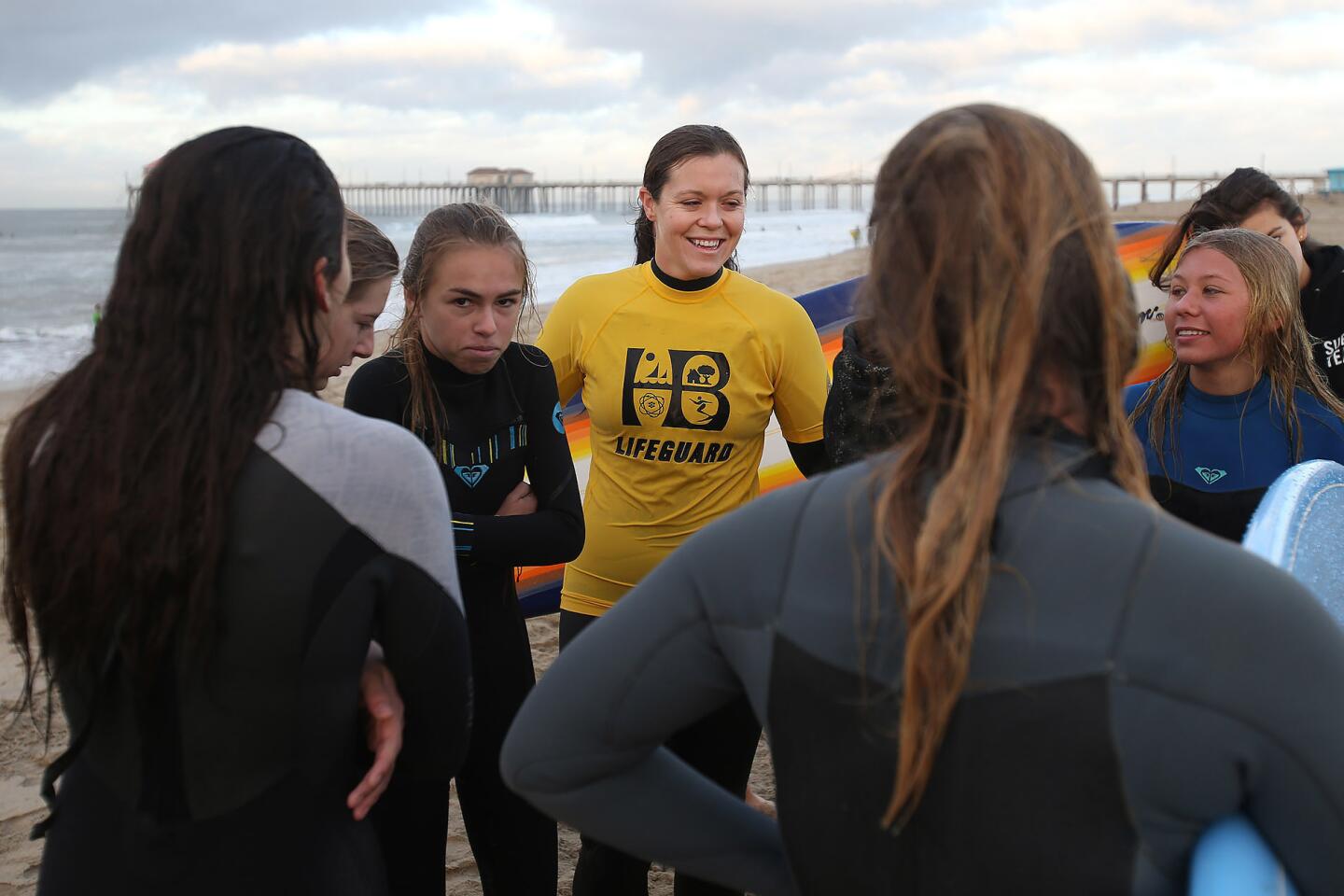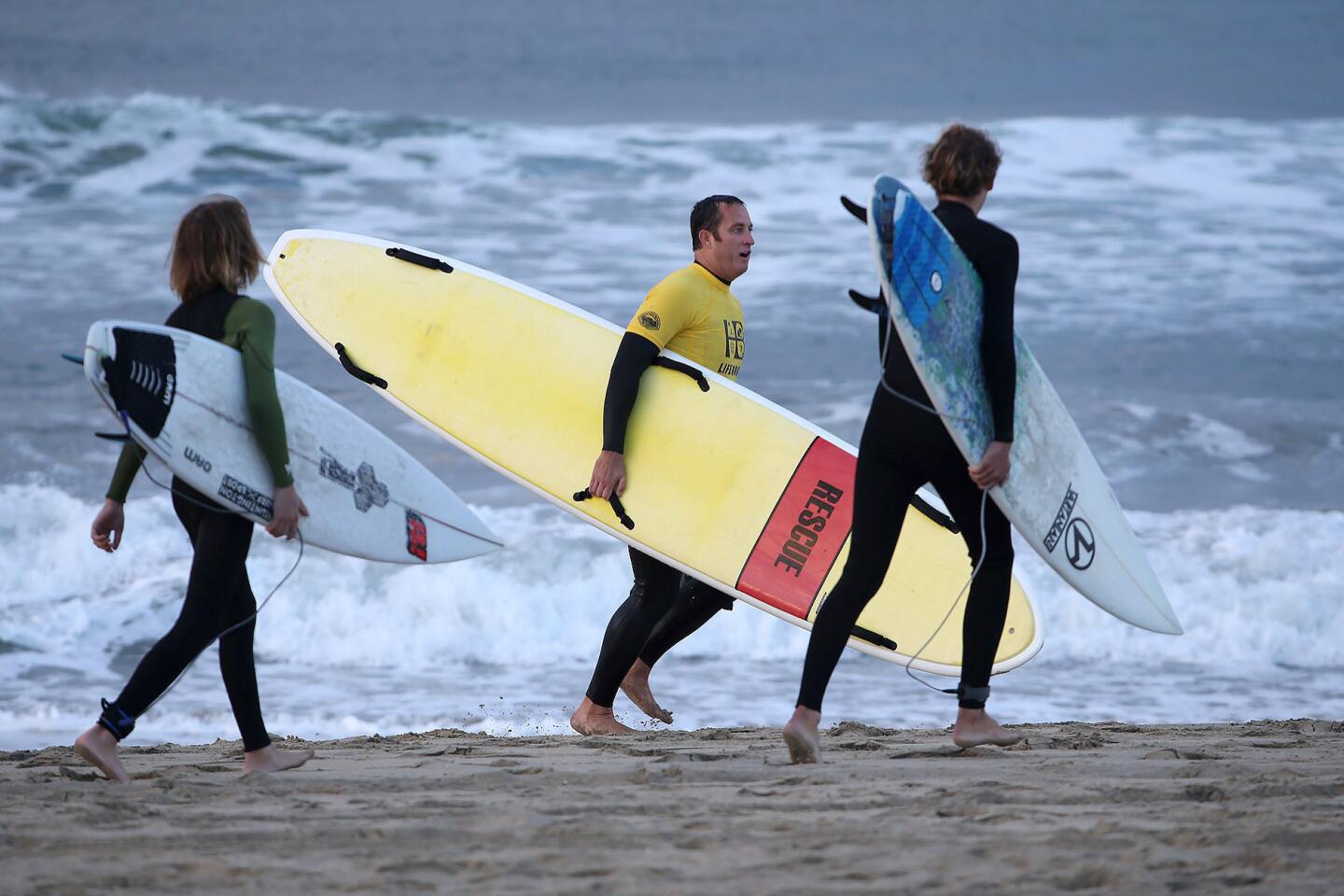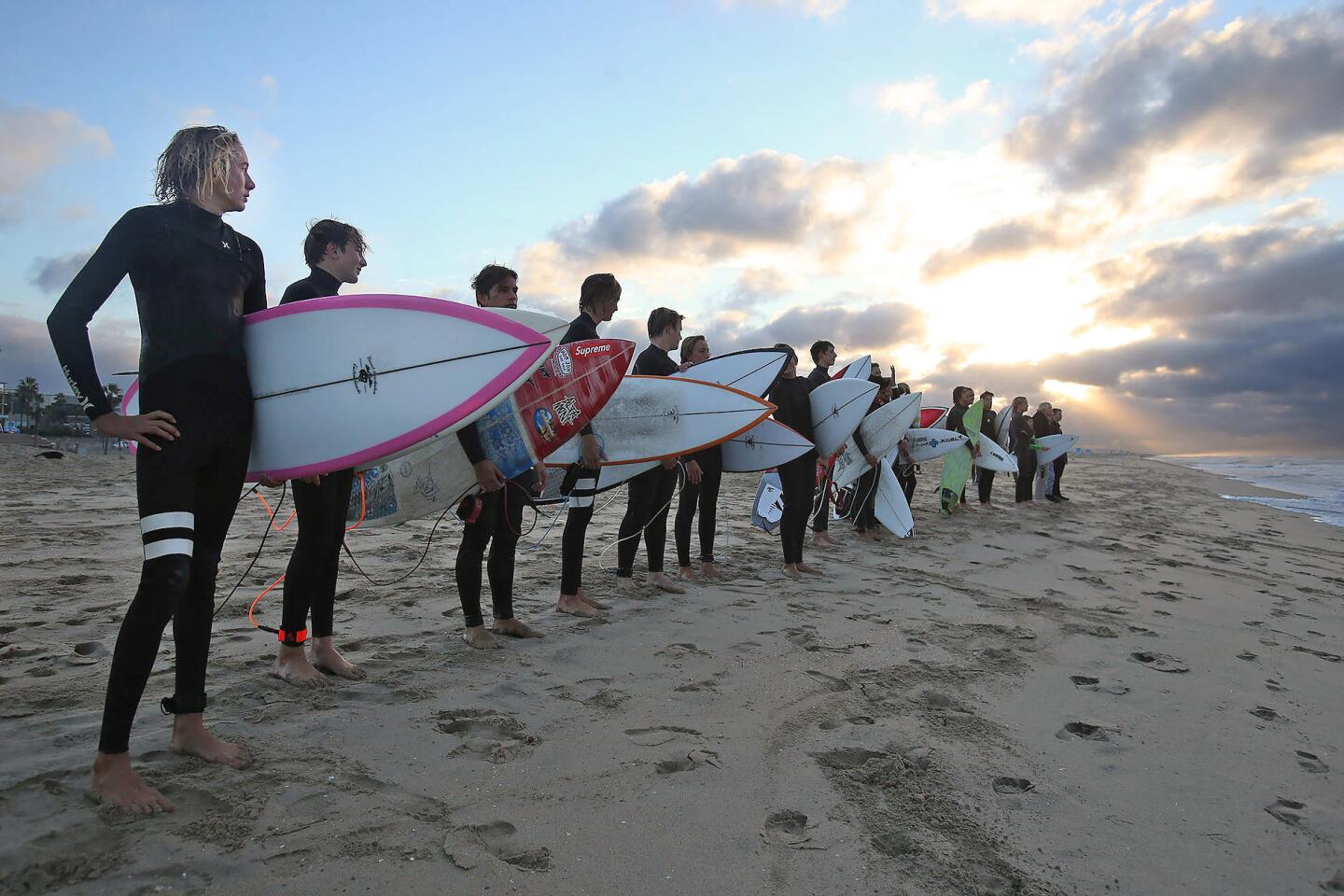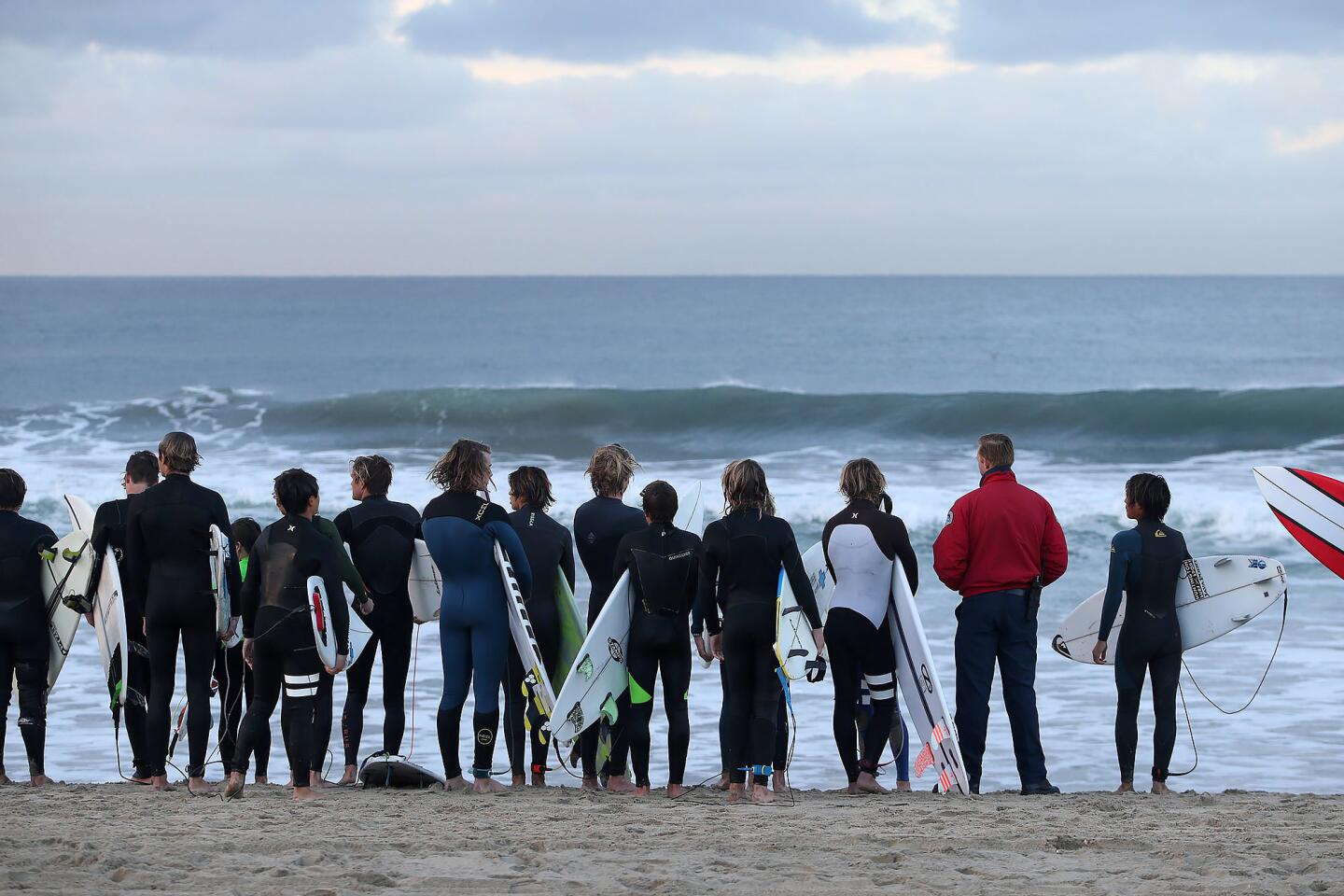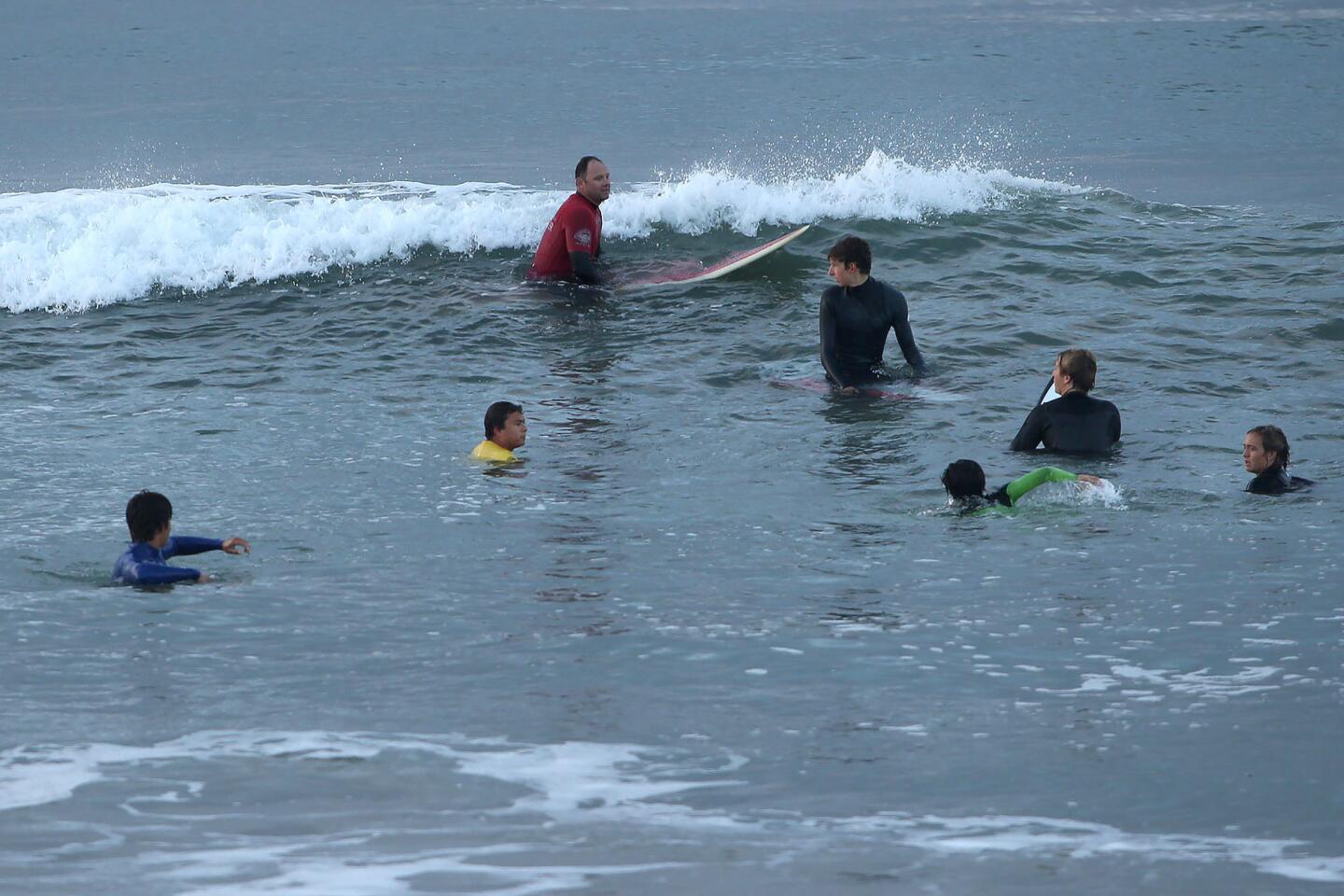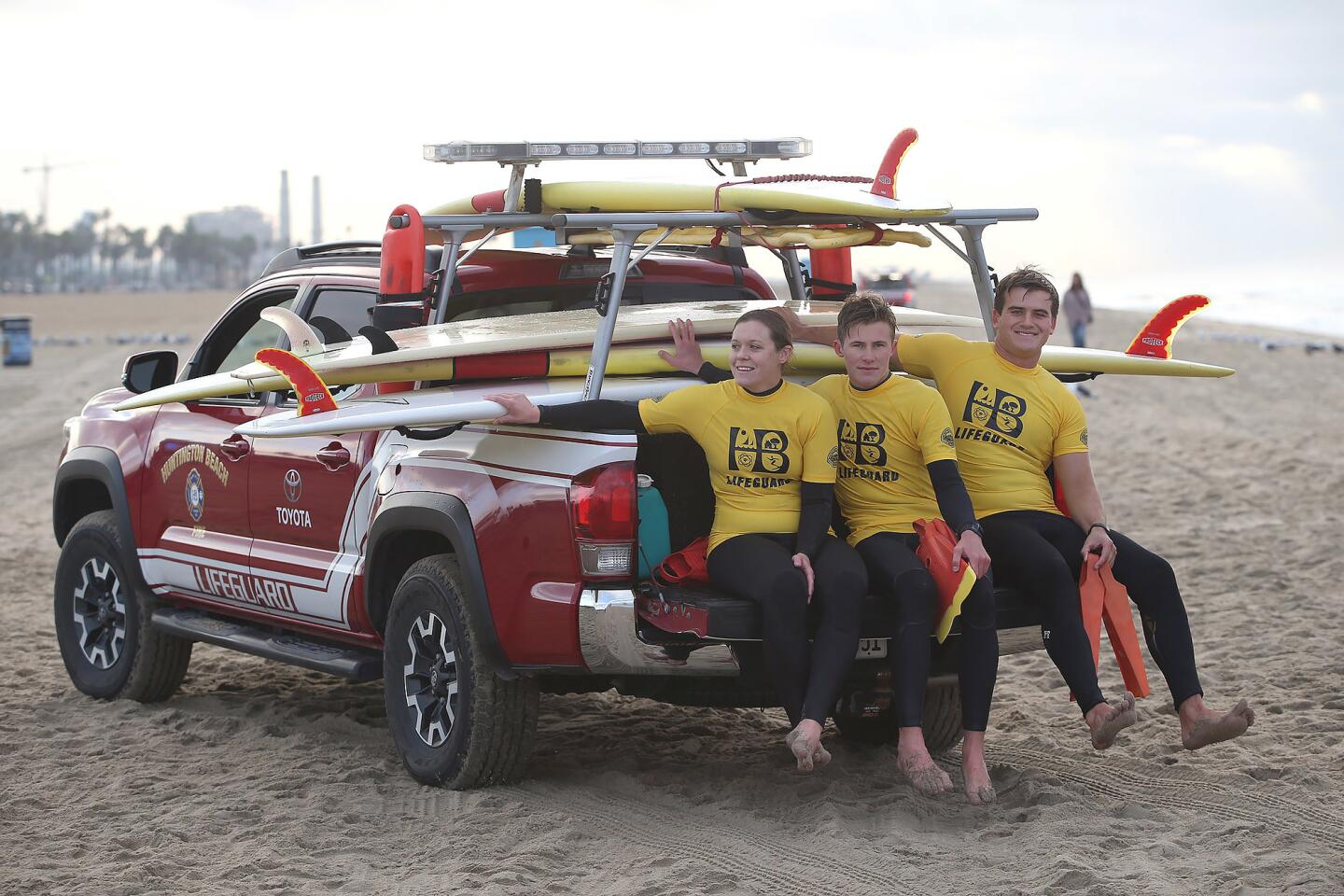Huntington Beach lifesaving training teaches young surfers to be first responders
- Share via
Nearly 100 Huntington Beach High School surfers in wetsuits lined the shore near the pier at sunrise Wednesday — not to catch the cool autumn waves but to learn lifesaving techniques from local lifeguards.
The school surf team is the latest local surfing group to participate in the Surfers Awareness in Lifesaving Techniques program designed by a team of Huntington Beach lifeguards to provide aquatic emergency response training.
“It’s rewarding to be in a program that’s not about just winning a competitive event — it’s about helping out others,” said Andy Verdone, Huntington Beach High’s surfing coach. “It’s going to have a ripple effect. … With all the kids here today, you know they’re going to save lives.”
The students took turns playing victim and rescuer. While one student sprawled over an upturned board, feigning unconsciousness, others were instructed on how to safely return him or her to shore. Once there, they also learned how to administer CPR using training dummies.
The students — some of the top teenage surfers in the country — said much of what they learned Wednesday was new to them.
Summer Balentine and Keanu Igarashi — participants in the USA Surfing Prime Series, an invitational series for the best surfers younger than 18 — said the SALT program changed the way they think about people who end up in unsafe situations in the water.
“People that surf Huntington kind of have a stigma toward [those] people, but this brought more attention that we should try to help them,” said Summer, 15. “If they’re in a starfish position, it usually means they’re exhausted and they could actually be in trouble. I didn’t really know that — I thought it was just, like, they didn’t know how to surf.”
SALT teaches that a crisis can happen to anyone at any time and that surfers have an obligation to look after one another, especially when there is no lifeguard patrol.
Five or six Huntington Beach lifeguards are on duty in the winter offseason, compared with 70 or 80 during the summer, according to Doug Leach, a Huntington Beach marine safety officer.
“[SALT] kind of spawned out of necessity,” Leach said. “We realized that many bystander rescues were by surfers who were already out there. If you surf long enough, it’s not a matter of if — it’s when.”
SALT instructors tell participants that true rescues require response from lifeguards and/or emergency medical services and that too many people trying to help can make it more difficult.
Zach Lyons, 17, said he was surfing at Huntington Beach on Nov. 6, 2016, when a Florida man died after crashing into one of the pier’s pillars.
“It was kind of one of those situations when there were too many people helping, like [the instructors] were saying,” Zach said.
Leach said the program teaches the “three R’s” — recognition of potential hazards and victims; reaction to people in need, with consideration of one’s own safety first; and response from lifeguards, emergency services and surfers.
“We want all of our surfers to be ambassadors of the water,” Leach said.
Luke Ponchak, 14, said the class covers “specific skills to know to be a good teammate.”
“I think a lot of kids didn’t realize they have a lot of power to help if they see someone struggling,” Luke said. “Now they know how to save a life.”
The SALT program is run by the Huntington Beach Marine Safety Division and is free to any local surf groups. Those interested can email [email protected] to set up a class.
Twitter @CharityNLindsey
All the latest on Orange County from Orange County.
Get our free TimesOC newsletter.
You may occasionally receive promotional content from the Daily Pilot.
